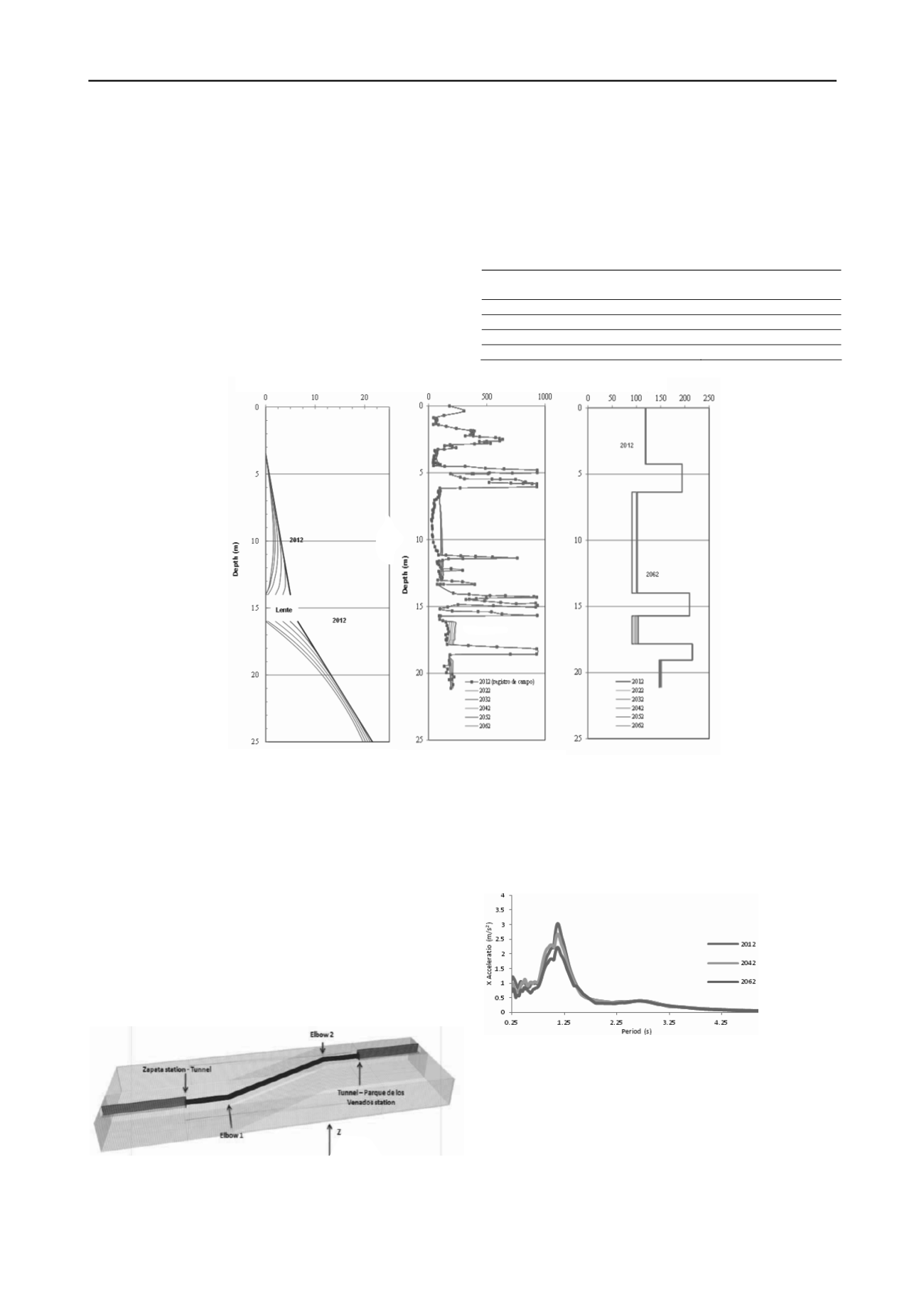
1685
Technical Committee 204 /
Comité technique 204
extraction induces changes in the values of CPT strength. This
can be represented by Eq 2 as follows:
q
c
(t)=N
'
v
(t) = N
'
v0
(t)+
u(t))
(2)
Where
N
(Santoyo et al., 1989) is a correlation factor (
N
≈
5.5) and
'
v0(t
)
is the initial effective vertical stress. The factor
u(t)
represents the variation of pore pressure at the period
under consideration. Evolution of shear wave velocity was
estimated from equation 1, taking into account the changes in
CPT strength over time. Evolution of these two parameters due
regional subsidence is presented in Fig.4b y 4c.
7 ANALYSIS OF RESULTS
In the seismic analyses three scenarios were evaluated. The first
corresponds for the present time, the second to 30 years in the
future and the last one 50 years. These analyses were performed
modifying the soil properties according to the proposed model
explained at previous section. We analyze the resulting histories
of acceleration, force and displacement.
Eight monitoring points were fixed along the tunnel, in areas
considered critical. These areas are the joints of tunnel and the
stations and the zones where tunnel changes its direction
(Elbow 1 and 2) (Figure 5). The monitoring points are located in
sections of the upper and lower parts of the tunnel.
Figure 5. Location of monitoring zones.
7.1
Evolution of the acceleration response
The resulting acceleration spectra show that the maximum
acceleration decreases with time (see Fig. 6). Table 1 shows that
acceleration reductions at each monitored zone are different
over 50 years, indicating clearly that the variation in the
resulting accelerations will be unique at each site.
Table 1. Variation of the acceleration magnitude between 2012 - 2062
Monitoring zone
Reduction of the
acceleration magnitude
Zapata station - Tunnel
17.0
Elbow 1
17.0
Elbow 2
13.0
Tunnel – Parque de los Venados station
4.5
Pore pressure distribution u (t/m²) CPT strength, qc (kg/cm²) Vs (m/s)
Ours results also show that the site dominant period is
located at 1.12 s and that it presents a small decrease of less
than 0.01 s over the 50 year period. This is due to the fact that
soil properties at the site; do not vary significantly along time.
Figure 4. Evolution of a) Pore pressure distribution, b) CPT Strength. c) Shear wave velocity, due regional subsidence.
Figure 6. Evolution of the acceleration spectra over time. Case of Elbow
1 in X direction.
7.2
Evolution of the relative displacements
Relative displacements between 2012 and 2042 do not vary
significantly but increase sharply between 2042 and 2062 where
we estimated an increase of 32% on this period of time (see Fig.
7).


